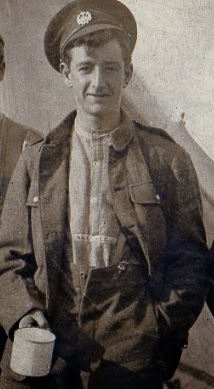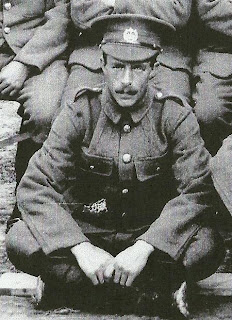Read the true story of the West Ham Battalion volunteers in
the Great War!
A century ago some of them were employed at the Thames
Ironworks while many of them supported their local team with a flat cap
passion. All the men came from within West Ham Utd’s traditional areas of
support, from Stepney to Silvertown, Leyton to Limehouse, Barking to Bow and
everywhere in between. A few of them were underage (while many were actually overage!)
but they all stood up in January 1915 and volunteered in the Hammers to defend
the things they held dear. Not many of them came home.
Read this exciting untold story and share in their pride and sadness, the good times and bad – from basic training on Wanstead Flats and route marching along Green Street in 1915 as riots erupted around them, through to the deadly meat-grinder of the Somme in 1916 and finally their epic last stand at Cambrai in 1917 – the same year West Ham Utd had won the Southern Combination League on April 28th.
On this same day, the West Ham Battalion attacked alongside
their regular partners on the battlefield, the Footballers. They were also volunteers, from the world of
professional football and had stood beside the Hammers since training. Among
their ranks was Bob ‘Pom-Pom’ Whiting, born and raised in Canning Town and
formerly the Thames Ironworks goalkeeper. He was playing for Brighton when he
enlisted and was legendary for his long kicks (a pom-pom was an anti-aircraft
gun!)
At around 5am on the 28th April 1917, the Hammers
and the Footballers attacked the village of Oppy and were decimated by well
prepared Germans. Bob Whiting was dead, as were nearly a quarter of the West
Ham Battalion and the Footballers. That afternoon, West Ham Utd beat Portsmouth
5-2 at the Boleyn and were crowned Champions, ahead of Millwall, Chelsea,
Tottenham and Arsenal.
It’s a story every West Ham supporter should
know and goes a
long way to explain the reasons behind the memorial plaque to the
Hammers
beside the club shop entrance. Over a decade of research has revealed
long forgotten people
and memories. For example, an official request was made in early 1915 to
the War Office for the cap-badge of the battalion to be two crossed
hammers!
It’s a story of local pride, the like of which will never come
again. Through official documents, eye-witness accounts, diaries,
newspaper reports and over 60 never before published photographs of the
West Ham Battalion you will discover the men, their private and collective
battles and their ultimate fate.
Available now!
For those of you new to the blog, use the 'older posts' menu on the right of the page to see all the previous posts. Please feel free to leave comments to any posts - the only problem is I cant quite work out how to reply! I am contactable directly on the email address in the 'about me' section. If your relative served in the Hammers Battalion, I'd really love to hear from you!
Please ask permission before using ANY images seen here!
Remembering Lance Corporal Adam Paul Drane, Section Second-in-Command within C (Essex) Company, 1st Battalion, The Royal Anglian Regiment, killed in Afghanistan on Monday 7 December 2009.
Remembering Private Robert Hayes of 6 Platoon, C (Essex) Company, 1st Battalion The Royal Anglian Regiment who was killed in Afghanistan on Sunday 3 January 2010.















.jpg)



























